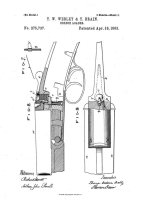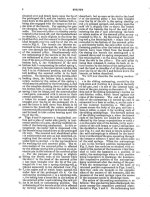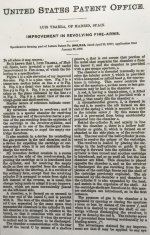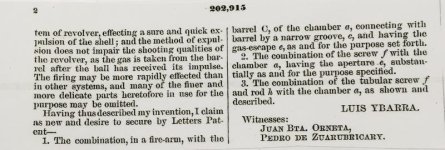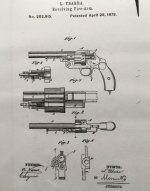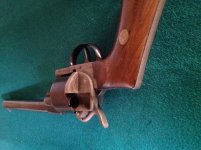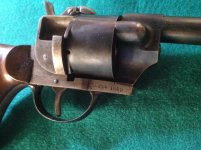I just thought I'd start a new thread on the copies that seem to have an interest on this forum. Might be an interesting subject to discuss?
Here is a number 2 Army copy made in England. I've seen this configuration but never put a name to the maker? It appears that "Meyers" was the manufacturer in England for this particular type copy. Obviously there were "many" copies of Smith & Wesson's manufactured by many companies at that time.
This one has the Birmingham proofs that were common in the 1870's found on British made handguns. I've seen these type of proofs on Webleys, various "early" bulldogs only, and Early cartridge Colt's that were shipped to the London Agency. Specifically, Lightnings, Newlines, and House Pistols.
So, in my opinion, Webley was most definitely involved as well as Tranter on a large scale. The type of proof marks on this copy were not used for very long.
Belgian made copies are a definite as well. This type of research is very similar to researching the Bulldog copies of the late 1870's through the turn of the century. In fact it's identical to those methods of copying various designs used by many gun makers. If the copy is not signed or initialed by the maker? It would be difficult to establish who made the copy. In this case the maker stamped the barrel. "Meyers"
Many of the literally millions of Bulldog copies are easily identified by various initials under the grip frame. These Smith & Wesson copies are likely "exactly" the same. If one was to look under the grips for initials, a manufacturer may be identified. There are many books/Authors out there that have identified through research who the gun makers are based on those markings under the grip.
In fact when I was researching Bulldogs I found that many Major Distributors in the US were actually purchasing copies! and selling them here in the USA. You can see clear evidence in the Sears & Roebuck catalogs, selling Belgian made bulldogs cheap! San Francisco before the 1906 Great Quake and fire was selling the "California Bulldog" that was made by a manufacturer in Belgium and shipped here on contract!
When researching the Bulldogs, I even found "Patents" applied for in the U.S.A. by Belgian gunmakers! Some of those patents look exactly like Smith & Wessons! and they were "Approved" by the patent office!!! A patent drawing that looks Identical to the 44 Russian but "hood winked" the Patent office by applying a feature that was never actually manufactured. Pretty slick. So, you tell me what was going on?
Murph
Here is a number 2 Army copy made in England. I've seen this configuration but never put a name to the maker? It appears that "Meyers" was the manufacturer in England for this particular type copy. Obviously there were "many" copies of Smith & Wesson's manufactured by many companies at that time.
This one has the Birmingham proofs that were common in the 1870's found on British made handguns. I've seen these type of proofs on Webleys, various "early" bulldogs only, and Early cartridge Colt's that were shipped to the London Agency. Specifically, Lightnings, Newlines, and House Pistols.
So, in my opinion, Webley was most definitely involved as well as Tranter on a large scale. The type of proof marks on this copy were not used for very long.
Belgian made copies are a definite as well. This type of research is very similar to researching the Bulldog copies of the late 1870's through the turn of the century. In fact it's identical to those methods of copying various designs used by many gun makers. If the copy is not signed or initialed by the maker? It would be difficult to establish who made the copy. In this case the maker stamped the barrel. "Meyers"
Many of the literally millions of Bulldog copies are easily identified by various initials under the grip frame. These Smith & Wesson copies are likely "exactly" the same. If one was to look under the grips for initials, a manufacturer may be identified. There are many books/Authors out there that have identified through research who the gun makers are based on those markings under the grip.
In fact when I was researching Bulldogs I found that many Major Distributors in the US were actually purchasing copies! and selling them here in the USA. You can see clear evidence in the Sears & Roebuck catalogs, selling Belgian made bulldogs cheap! San Francisco before the 1906 Great Quake and fire was selling the "California Bulldog" that was made by a manufacturer in Belgium and shipped here on contract!
When researching the Bulldogs, I even found "Patents" applied for in the U.S.A. by Belgian gunmakers! Some of those patents look exactly like Smith & Wessons! and they were "Approved" by the patent office!!! A patent drawing that looks Identical to the 44 Russian but "hood winked" the Patent office by applying a feature that was never actually manufactured. Pretty slick. So, you tell me what was going on?
Murph
Attachments
-
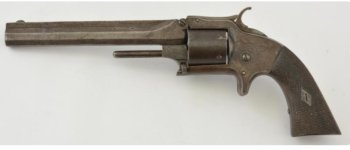 51E92855-43BE-4F2C-BBE0-50279A46661F.jpg17.6 KB · Views: 114
51E92855-43BE-4F2C-BBE0-50279A46661F.jpg17.6 KB · Views: 114 -
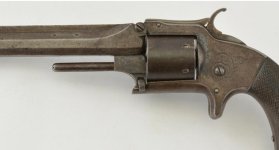 D6927380-B466-44AD-9744-073DEB70D8B4.jpg28.9 KB · Views: 98
D6927380-B466-44AD-9744-073DEB70D8B4.jpg28.9 KB · Views: 98 -
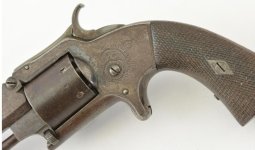 DC7A0AAB-A38D-43A0-BEEB-4789E01F9150.jpg42.1 KB · Views: 98
DC7A0AAB-A38D-43A0-BEEB-4789E01F9150.jpg42.1 KB · Views: 98 -
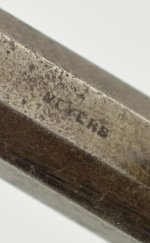 2D262686-7EED-491E-B522-6A2B1E5048C4.jpg39.2 KB · Views: 109
2D262686-7EED-491E-B522-6A2B1E5048C4.jpg39.2 KB · Views: 109 -
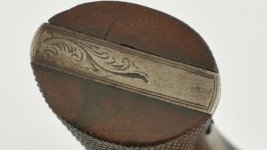 8EE824DC-9241-4BE1-AB3F-A618760469FE.jpg23.5 KB · Views: 84
8EE824DC-9241-4BE1-AB3F-A618760469FE.jpg23.5 KB · Views: 84
Last edited:

